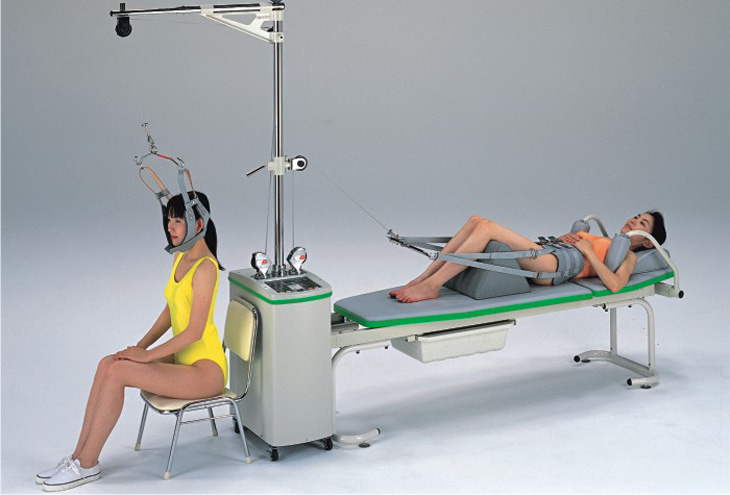
There are many disorders known to cause back pain including those defined as mechanical and/or compressive. Mechanical back pain commonly stems from an injury or a degenerative process affecting discs, joints, ligaments and/or muscles. Pain from an irritated or ‘compressed’ nerve root, such as in Sciatica, is termed compressive pain.
Conservative forms of treatment include non-steroidal anti-inflammatory medication, muscle relaxants, prescription drugs for pain during the acute phase, and physical therapy. Along with these therapies, spinal traction may be recommended.
Spinal Traction – What It Does
Therapeutic spinal traction uses manually or mechanically created forces to stretch and mobilize the spine. Traction may alleviate back pain by stretching tight spinal muscles that result from spasm. It widens the intervertebral foramen to relieve nerve root impingement.
Patient Evaluation
Each patient is unique and what works well for one patient may not be appropriate for another. Therefore, each prospective patient is carefully evaluated prior to recommending tration. The assessment enables the therapist to make decisions about the type of traction to be utilized, the force/weight of the traction, the duration of treatment, and whether to use it at all.
The goal of traction is to reduce pain and to assist the patient to become more functional. Therapy should be relaxing and will not cause additional or new pain. Therefore, the initial session of therapeutic traction typically uses less force or weight during distraction. The therapist carefully follows cues from the patient relative to their tolerance level, which includes body positioning.
Traction Techniques
Techniques applied in spinal traction are dependent in part, on the patient’s physical condition, disorder, individual tolerance, and the spinal level to be treated. Application of traction may be manual, positional, or mechanical. Traction may be applied as a continuous force or intermittently. Some techniques are presented below.
Cervical Traction
Manual therapeutic traction is a hands on approach. The patient lies in a relaxed and comfortable supine position on the table. The therapist carefully positions their hands to support the patient’s head during distraction. The force is gentle, stable, and controlled.
During traction the therapist may reposition the head to one side, flex, or extend the neck using their hands. A change in head position during traction can produce more positive results in reducing the patient’s symptoms.
A mechanical traction device used to treat the cervical spine; it is comprised of a head halter collar with an over-the-door pulley system. Some patients are allowed to use this system at home after the therapist teaches them how to set the system up, wear the halter, apply the weights correctly, and understand the duration of traction treatment required. The patient may be able to use the head halter sitting, reclining, or laying supine.
Lumbar Traction
Manual Lumbar traction involves distracting almost half of the body’s weight and therefore requires more of the therapist’s strength. After the patient is positioned, the therapist may pull at the ankles, once again using controlled force. Another technique involves draping the patient’s legs over the therapist’s shoulders. The therapist then steadily pulls with their arms positioned across the patient’s thighs. An alternative is a pelvic belt with straps used for distraction.
Mechanical traction may incorporate the use of a motorized split-traction table. The patient is placed in a pelvic harness secured to one end of the table. Some motorized units are computerized, enabling the therapist to program the patient’s session of therapeutic traction.
Contraindications
When the structural integrity of the spine is compromised, such as in osteoporosis, infection, tumor, or cervical rheumatoid arthritis, traction is not a treatment option. Other physical conditions such as pregnancy, cardiovascular disease, hernia, and in some cases TMJ, exclude patients from spinal traction. In these situations, the forces used in traction (movement) could potentially be dangerous.